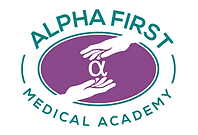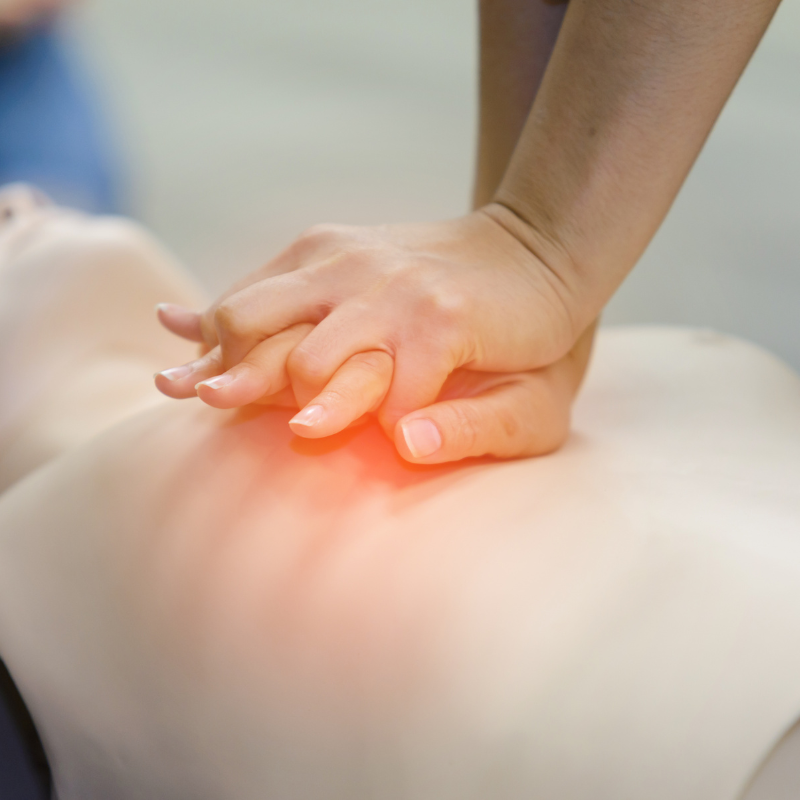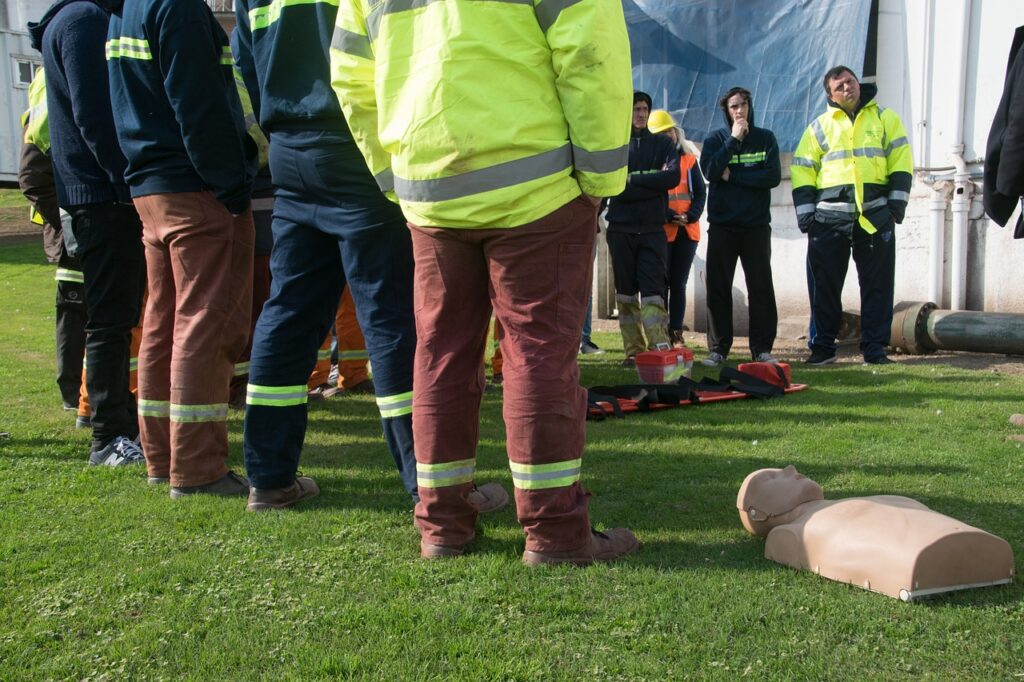Why Is It Important To Learn CPR?
CPR, which stands for Cardiopulmonary Resuscitation, is a life-saving technique that’s super important for everyone to learn. Imagine if someone’s heart stops beating or they stop breathing. Knowing CPR means you could help keep them alive until professional help, medical emergency personnel arrives.
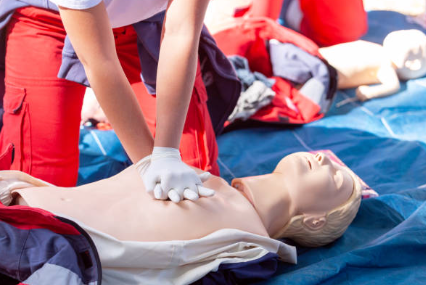
CPR Saves Lives!
Here’s why learning CPR is a big deal:
- It Keeps Blood Flowing: When you do CPR, you’re basically taking over the job of the heart and lungs. You press on the chest and give breaths to keep blood moving to the brain and other organs.
- Buys Precious Time: CPR doesn’t fix the problem, but it gives the person a better chance until professionals arrive with more advanced care.
- Anyone Can Learn It: You don’t have to be a doctor or a nurse. With some training, anyone can learn how to do CPR correctly.
9 Benefits of Learning CPR
Saves Lives:
Knowing CPR can make the difference between life and death in many emergencies.
Increases Survival Rates:
Immediate CPR can double or even triple a person’s chance of survival after cardiac arrest.
Helps in Many Emergencies:
CPR skills are useful in various situations, not just for heart attacks.
Boosts Confidence:
Being trained gives you the confidence to act quickly and effectively in a crisis.
Empowers You to Act:
Instead of feeling helpless, you can take charge and provide care until professionals arrive.
Improves Safety:
When more people know CPR, it creates a safer environment for everyone.
Provides Peace of Mind:
Knowing you can help your loved ones in an emergency is comforting.
Promotes Quick Thinking:
CPR training teaches you to think on your feet and make fast decisions.
Enhances First Aid Skills:
Learning CPR often includes basic first aid, which is valuable in many scenarios.
Valuable in the Workplace:
Many employers value employees who are trained in CPR and may even require it.
What are CPR and First Aid Training, and What Should You Expect?
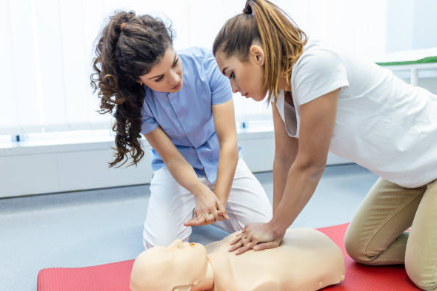
Here’s what you can expect when you take a CPR and first aid class:
- Learning the Basics: You’ll learn about the basic steps of CPR, which include chest compressions and rescue breaths. Instructors will explain when and how to use these techniques safely.
- Hands-On Practice: You’ll get to practice on mannequins to simulate real-life situations. This helps you get comfortable with the motions and the force needed for effective chest compressions.
- First Aid Techniques: Besides CPR, you’ll learn how to treat other common injuries. You’ll also learn how to recognize signs of serious health issues like strokes and heart attacks.
- Safety Precautions: Safety for yourself and the injured person is crucial. You’ll learn how to protect yourself from bloodborne pathogens and ensure the scene is safe before providing help.
- Assessment Skills: Before jumping into action, you’ll learn how to assess the situation and the injured person’s condition. This includes checking for responsiveness and calling for emergency services.
- Certification: After completing the course, you may receive a certification. This usually lasts for two years, after which you’ll need to renew it.
You’ll Be Ready for a Cardiac Emergency
Signs of a Cardiac Arrest
If someone is having a sudden cardiac arrest here, it’s crucial to know the signs so you can act fast. Here are the key signs to look out for:
- Sudden Collapse: The person may suddenly fall to the ground and won’t respond when you talk to them or shake them gently.
- No Pulse or Breathing: They won’t be breathing normally, and you won’t feel a pulse.
- Unresponsiveness: Even if you shout their name or ask if they’re okay, they won’t answer.
- Loss of Consciousness: The person will be unconscious and not wake up when you try to get their attention.
How to Respond to a Cardiac Arrest
If you see these signs, here’s what you should do immediately:
- Call for Help: Dial 911 or your local emergency number right away. Tell them you think someone is having a cardiac arrest.
- Start CPR: Push hard and fast in the center of the chest at a rate of 100-120 compressions per minute. If you’ve been trained in CPR, give rescue breaths after every 30 compressions.
- Continue Until Help Arrives: Keep doing CPR until emergency responders take over or the person starts to show signs of life, like moving or breathing normally.
Remember, acting quickly can save a life. Don’t hesitate to use CPR – you can make a huge difference!
How Often Should You Refresh Your Skills?
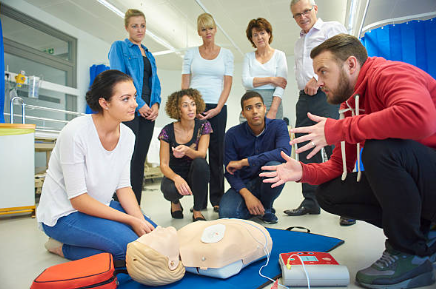
Even if you’ve learned CPR, it’s smart to take a refresher course every two years. That way, you won’t forget what to do, and you’ll learn about any new techniques.
CPR training is not just another class—it’s a skill that could mean the difference between life and death. By learning and keeping your CPR skills fresh, you become a superhero without a cape, ready to save lives at a moment’s notice. So why not sign up for a CPR class today? It’s a decision you won’t regret, and it could help you to save someone’s life or a life tomorrow.
Become a Life Saver!
Remember, CPR certification usually needs to be renewed every two years. So even if you’ve learned it before, it’s important to keep your skills up to date.
Ready to Start?
Sign up for a class today and become someone’s hero tomorrow. Your bravery and knowledge could bring someone back to their family. Don’t wait – learn how to save a life now!
